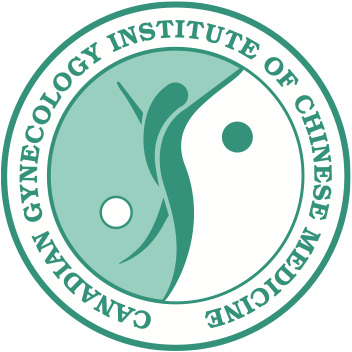Acupuncture & Obesity – This paper was originally written by the doctoral Professor, Zhongchen Zhang, from the Department of Traditional Therapy of University City Hospital, Guangdong Province Hospital ofTCM. OnApril 17, 2011, CSCMA held an academic seminar on “The Acupuncture Clinical Experiences Regarding the Treatment of Obesity” where Zhongcheng Zhang, M.D presented his paper. About 200 members attended. Dr. Zhang lectured in a light hearted and friendly manner. He talked about the pathogenesis of obesity, the trends of his research, clinical classifications, and shared his acupuncture treatment experiences. This is a summary of the paper and his presentation on Acupuncture & Obesity.
Obesity: the General Idea
Obesity refers to people, whose intake of energy exceeds their consumption of energy, leading to excessive accumulation and storage of fatty tissue in the body. It is a chronic metabolic disorder that is related to many factors. Obesity unrelated to endocrine function and metabolism is referred to as Simple Obesity and is the cause of 95% of obesity cases. It is manifested as excessive fat in the body, fatty and clumsy body and slow motion. The World Health Organization (WHO) refers to obesity as a type of disease that has an increased risk of suffering from hypertension, hyperlipemia, cardiovascular disease, diabetes, cancer and joint disease. It directly affects the health and well being of the person as well as costing the person and government a lot of money.
Statistics: Obesity is becoming a serious health issue with the population of obese people rapidly increasing in most countries. InAmerica, 54% of people have body mass index (BMI) of more than 25 and 22.5% have aBMI of more than 30. This gives an average of 97 million people with this condition. In 2005, the American Association of Diabetes announced that 1 billion people worldwide have a problem with weight. InChina in 2002, a nutrition survey showed that 22.8% of the population was overweight, increasing 39% within 10 years, and 7.1% of the population is obese, increasing 97% in the past 10 years. Wow!!
Characteristics: Obesity is measured by body mass index, waist circumference and waist to hip ratio. The basic pathological characteristic of obesity is the increase of body fat which accumulates and stores in adipose tissue and manifests as increasing numbers of adipose cells, enlargement of adipose cells, unbalanced body fat distribution and local accumulation of fat. It is classified into two types, the first being obesity due to enlarged adipose cells which is generally more common in adults, and obesity due to multiple adipose cells which is more common in children.
Risks: The risks of obesity are socio-economic in nature. The effects on society can include high cost, stressed family relations and the wasting of social resources. The effects on the person can include trouble with the complications of obesity, associated psychological conditions and difficulty in socially adapting.
Manifestations: can include shortness of breath, fatigue, difficulty sleeping, lumbago, joint pain, profuse sweating, incontinence of urine, abnormal menstruation, depression and disturbed quality of life.
Complications of obesity are increased risk of chronic complications affecting physical and mental states including sleep apnea, edema in the lower limbs, varicose veins in the lower limbs, increased risk with anesthesia and surgery, cellulites, hypertension, diabetes, hyperlipemia, gout, osteoarthritis, tumors, cholelatis, cholelithiasis, acanthosis nigricans. In severe cases, there is an increased rate of mortality, decreased lifespan, increased stress, decreased quality of life and increase of monetary expenditure.
Etiology: In normal weight people, the central nervous system (CNS) can balance the intake and consumption of energy accurately. Obesity results when there is a long term unbalance of energy due to over eating and/or decreased energy consumption. The surplus energy is stored as fat in the body. This is related to many factors including heredity or environmental factors or a combination of the two.
Treatment: As of now, the treatment of obesity centres around diet and exercise but may also include medicinal and behavioral therapy as well as surgery. A change in diet and the implementation of exercise is imperative to the success of rehabilitation. Medicinals often used are appetite inhibitors, drugs to decrease the storage of energy, drugs to increase the consumption of energy or genetic protein therapy.
Obesity & Chinese Medicine
Classic texts view obesity as a dampness and phlegm problem due to a Spleen disorder. Its etiology is related to a congenital deficiency, diet disorder, over rest and/or abnormal emotions, and its pathogenesis relates to phlegm, dampness and Qi deficiency.
|
Etiology |
Pathogenesis |
Treatment Principle |
Acupuncture Effect |
| Congenital | Excess heat in the Stomach and intestines | Remove obstruction to clear heat | Inhibition of Stomach reception |
| Emotional | Unbalanced Spleen & Stomach with Stomach heat and Spleen stagnation | Inhibit Stomach, strengthen Spleen | Aid Spleen transformation and transportation |
| Diet | Excess damp due to Spleen deficiency | Strengthen Spleen to resolve dampness | Circulate qi to relieve stagnation |
| Inactivity | Liver Qi stagnation affecting Spleen | Smooth Liver, strengthen Spleen | Clear dampness, expel phlegm |
| Gender/Age | Liver Qi stagnation | Smooth Liver to relieve stagnation | Expel fat to resolve turbid |
In a case analysis of 113 cases of obesity, it was shown that 68 had excess Stomach and Intestine heat, 15 had Liver Qi stagnation, 13 had dampness obstructing due to Spleen deficiency, 4 had Kidney & Spleen Yang deficiency, and 3 had interior heat due to Yin deficiency
Acupuncture & obesity – treatment has show to have an influence on appetite, and affect energy metabolism, digestion and the nervous and endocrine systems. Significant results have been found along with long term effects, less side effects and lower treatment cost. Most obesity patterns are due to a primary deficiency and secondary excess involving the Spleen and Stomach and affecting the Liver and Kidney. There are five basic types:
- Spleen Deficiency with Dampness: which manifests as obese body, fatigue, heavy limbs and body, poor appetite, abdominal distention, loose stools, decreased urine, slightly red tongue, thin pale and greasy coating and a deep/slippery thready pulse. The treatment principle is to strengthen the Spleen and resolve dampness. Points that are used include SP 9, ST 36, SP 6, RN 12, ST 40, RN 9, SP 3, and DU 20 and manipulations are applied with an even method. Moxa and warm needles can also be used. Supplementary ear needles or seeds can be applied to the Spleen, Stomach, Bladder, Kidney, San Jiao, and Subcortex points with moderate stimulation.
- Dampness Accumulating due to Stomach Heat: which manifests as obese body, excessive appetite, rapid digestion, easily hungry, red scanty urine, constipation, red tongue, yellow coating, and a rapid slippery pulse. The treatment principle is to clear Stomach heat. Points that are used include ST 44, LI 11, ST 37, UB 21, RN 12, SP 4, and ST 42 and manipulations are applied with a reducing method. Supplementary ear needles or seeds can be applied to the Hunger, Spleen, Stomach, Sympathetic, and Shen Men points with a strong stimulation.
- Liver Qi Stagnation: which manifests as obese body, fullness and distending pain of the chest, irritability, dizziness, breast distention in women, abnormal menstruation, red tongue, thin pale coating, and a taut pulse. The treatment principle is to smooth the Liver to relieve stagnation. Points that are used includeLV 3, RN 17, SJ 6, GB 34,LV 2, and UB 18 with manipulations applied with a reducing method and with moderate stimulation. Supplementary ear needles or seeds can be applied to the Liver, Gallbladder, Endocrine, Sympathetic, Shen Men, Subcortex, and Ovary points with a strong stimulation.
- Spleen & Kidney Yang Deficiency: which manifests as obese body, fatigue, sore lumbar region, weak limbs, impotence, edema in the lower limbs, slightly red tongue, pale coating, and a deep thready forceless pulse. The treatment principle is to warm and tonify the Spleen and Kidney. Points that are used include UB 23, DU 4, RN 4, KI 3, UB 20, SP 9, RN 9, SP 6, RN 6, and RN 8 with manipulations applied with a tonifying method. Supplementary ear needles or seeds can be applied to the Spleen, Kidney, Endocrine, Pancreas, Gallbladder, Shen Men, and Subcortex points with weak stimulation.
- Interior Heat due to Yin Deficiency: which manifests as obese body, dizziness, distending headache, five center heat, sore and weak lumbar region, scanty red urine, red tongue, less coating, and a thready rapid pulse. The treatment principle is to nourish Yin to clear away heat. Points that are used include UB 18, UB 23, HT 7, KI 3,LV 2,LV 3, SP 6, PC 6, and UB 15 with manipulations applied with an even method. Supplementary ear needles or seeds can be applied to the Liver, Kidney, Sympathetic, Heart, Shen Men, and Endocrine points with mild stimulation.
In some cases of obesity there is uneven distribution of fat in the body, especially with fat accumulating in the abdomen, buttocks or limbs. While general obesity is due to an imbalance of Qi, Blood, Yin and Yang, abnormal distribution of fat also has local meridian obstruction. Thus local points or ashi points should be used in conjunction with systemic points. Large or long needles can be used to regulate the Qi in these areas.
Also, it is essential to note that manipulation is an important factor to gain weight loss results. For deficiency patterns, there should be puncture with little twisting and thrusting. For excess patterns, there should be puncture with large twisting and thrusting. For early stage obesity, which manifests as rapid hunger, constipation and as an excess pattern, there should be puncture with large twisting and thrusting, especially on ST 36, ST 37, and ST 25.
Weight generally decreases after the application of acupuncture. At first there is a large weight loss, then a plateau and then a gradual decrease in weight.
The following formulas have often been used. They are all indicated for simple obesity (SO). Please speak to your practitioner about taking herbal medicine.
| Formula |
Fang Feng Tong Sheng San |
Bi Jin Jiang Zhi Wan (Yu Jin, Ming Fan) |
Qing Shen Jian Fei Wan (Huang Qi, Fang Ji, Zhe Xie, Bai Zhu, Dan Shen, Yin Chen, Da Huang) |
| Indications | After 1 week the patient should loose weight. More is lost after 3 months.For SO with edema, take Huang Qi Tang, 5g daily. | SO with hyperlipeima | SO with coronary heart disease, diabetes, hypertension, hyperlipemia |
| Dosage | 3-5g daily for 1-3/6 months | 6g each, 3x/day after meals. Each session is 20 days, use 2-3 sessions | 5 tablets 3x/day |
| Side Effects | Uncommon: may increase stool movement at first | Upset stomach |
Though what it generally comes down to is that treating obesity takes time, which entails building confidence in the acupuncture to ensure long term treatment. In a case study of 3218 patients, long term acupuncture had better results than short term acupuncture, and chronic obesity patients required longer treatment, while those with recent obesity tend to see results faster. This study also showed that there are generally greater results at the beginning of treatment, followed by a plateau in weight and then a slow, steady decline in weight. If the treatment is stopped in the middle, results will be lost; if treatment is continued, weight will not return. Cooperation and education are very important.
If you have any questions or comments, please contact us. We’d be happy to answer any questions.
Caroline Prodoehl, R. TCMP.

